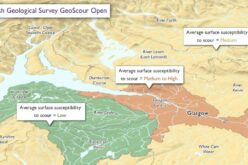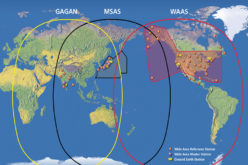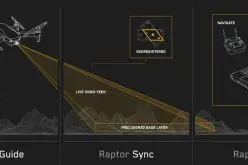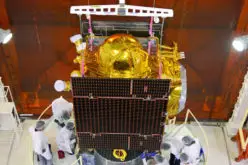Strengthening GNSS Resilience: Trimble Leadership on IonoGuard Innovation and Solar Cycle 25
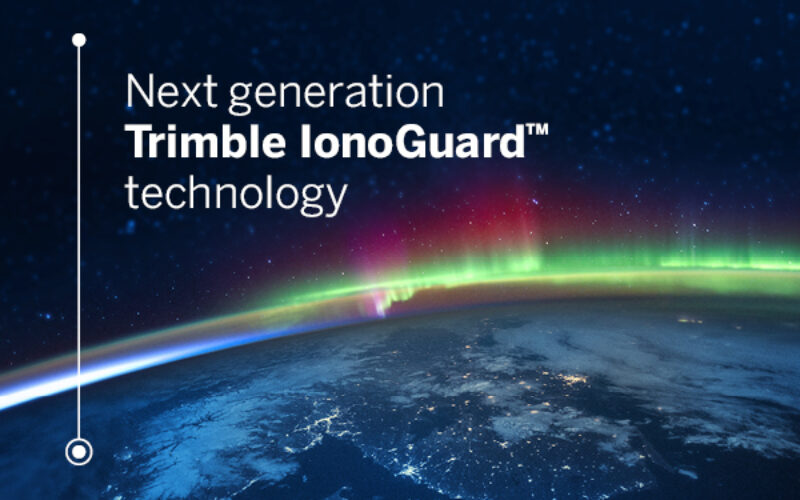
As the effects of Solar Cycle 2025 intensify, industries dependent on precise positioning—such as surveying, agriculture, construction, and autonomous systems—are facing growing challenges due to ionospheric disturbances. In response to this global issue, Trimble has introduced a breakthrough technology: IonoGuard™. Originally built into Trimble’s GNSS receivers with ProPoint® technology, IonoGuard is now available to Trimble Pivot Platform 5.2 operators and their users, bringing enhanced accuracy and signal integrity even during solar flare activity.
To understand the strategic vision, technical foundation, and real-world impact of IonoGuard, we had the opportunity to conduct a brief questionnaire with Keeley Shea, GNSS Corrections Product Manager at Trimble Advanced Positioning. In this exclusive interview, she shed light on how Trimble is safeguarding the future of GNSS reliability—and what this means for industries navigating space weather’s growing uncertainty.
The questionnaire follows as…
GIS Resources – What strategic foresight led Trimble® to develop and integrate IonoGuard™ technology, especially considering the challenges posed by Solar Cycle 25?
Keeley – To provide some foundational context about Solar Cycle 25, the sun undergoes a 22-year phenomenon, during which its magnetic field flips polarity every 11 years—magnetic north becomes magnetic south—and then returns to its original state at the end of the 22 years. As the 11-year cycle progresses, sunspot activity increases, culminating in a phase of peak activity known as the solar maximum. This period is characterized by frequent solar flares and coronal mass ejections (CMEs)—powerful explosions of plasma and radiation from the sun’s corona. These events interact with the Earth’s magnetic field via solar winds, often resulting in geomagnetic storms. Additionally, these particles ionize and excite the oxygen and nitrogen in the atmosphere, creating the vibrant phenomenon of the Aurora. The solar cycle was first documented in 1755—Solar Cycle 1—the Solar Cycle now is at its 25th iteration, coincidentally aligning with the year 2025.
Since 1978, Trimble has been leading the way in positioning technology, introducing its real-time correction network, Trimble VRS Now, in 2006. With experience spanning five solar maximums since its early GNSS technologies, and two solar maximums since its advancement of real-time correction solutions, Trimble has been uniquely positioned to collect solar fluctuations data and build significant expertise in analyzing how solar activity affects GNSS positioning errors and impacts GNSS positioning accuracy. Leveraging this extensive knowledge, Trimble’s GNSS experts have proactively tackled the challenges posed by Solar Cycle 25, developing a solution to mitigate its effects. Trimble IonoGuard technology is the result of this advanced engineering and an example of Trimble’s commitment to continuous enhancement of positioning accuracy and reliability.
GIS Resources – How does IonoGuard align with Trimble’s broader innovation roadmap for enhancing GNSS reliability under extreme space weather conditions?
Keeley – GNSS continues to be increasingly critical across various industries, not just for navigation but also for data acquisition, processing and geolocation. The required level of precision and accuracy has evolved from steering systems for agricultural machinery to meeting the demands of geospatial tasks, and has been further refined to address the stringent requirements of construction operations. As these applications expand and industries demand greater performance, solutions must evolve correspondingly, reinforcing the necessity for stable and dependable positioning.
Space weather follows a predictable cycle, meaning the elevated atmospheric interference currently affecting GNSS observations, as well as ‘anomalies’ recorded in the past, will inevitably occur again. Understanding and addressing these disruptions are critical for fostering future-focused innovation. During the last solar maximum, only two navigation satellite constellations—GPS & GLONASS—were commercially available. Today, under Solar Cycle 25, fully enabled receivers track at least four constellations (GPS, GLONASS, Beidou, Galileo). This expanded capability equips Trimble monitoring receivers with significantly more atmospheric data, offering enhanced clarity on the impact of scintillation, Total Electron Content (TEC) and Ionospheric disturbance on pseudorange (code), and carrier phase measurements. IonoGuard exemplifies Trimble’s commitment to advancing its foundational technologies through continuous innovation.
GIS Resources – Can you explain how IonoGuard works in conjunction with Trimble ProPoint® and Pivot 5.2 to maintain RTK accuracy during high ionospheric activity? Is this Trimble-only technology? If yes, are there plans to expand IonoGuard technology beyond Trimble platforms to create more interoperable GNSS ecosystems in the future?
Keeley – IonoGuard is integrated at two critical points within the GNSS workflow. It is embedded in the Trimble ProPoint engine—in integrated survey receivers such as the R980, R780, and hallmark R12i—as well as in Trimble base stations (Trimble Alloy) that form the backbone of the VRS Now network. Additionally, the Trimble Pivot platform leverages IonoGuard technology extensively throughout its signal processing analysis.
IonoGuard is a proprietary technology exclusive to Trimble receivers, with its primary strength rooted in the Trimble ProPoint engine, which incorporates an advanced signal-filtering algorithm. Together, IonoGuard and ProPoint employ a sophisticated approach to filtering, designed to mitigate the adverse impacts of scintillation, elevated TEC, and higher levels of atmospheric ionization—conditions that typically degrade performance in conventional GNSS receivers, resulting in signal disruptions, cycle slips, and positioning errors. By processing data from multiple satellite constellations and integrating it with these algorithms, the engine optimizes positioning performance and compensates for inconsistencies in the ionosphere at specific locations.
This functionality extends to the reference station level, where stations actively perform their own ionospheric disturbance detection within the VRS Now network. Pivot then incorporates IonoGuard information within its advanced signal analysis when it creates a Virtual Reference Station (VRS). The VRS correction information is sent via Compact Measurement Record (CMRx) protocol to the rover. As a result, the rover can utilize both localized and network-wide ionospheric information from VRS Now to refine its calculated position. This dual-layered advantage allows for an optimized and highly accurate positioning solution.
Trimble IonoGuard is a Trimble only solution.
GIS Resources – What makes IonoGuard stand out compared to traditional GNSS mitigation strategies used during solar flares or ionospheric disturbances?
Keeley – From a practical perspective, traditional GNSS mitigation strategies to manage solar flares or ionospheric disturbances typically involve avoiding usage during periods of intense activity, particularly around midday when solar radiation is at its peak. This is often accompanied by verifying and rechecking control points to ensure measurement precision remains within project specifications, alongside utilizing GNSS systems that support full satellite constellations.
Trimble IonoGuard represents a significant evolution in addressing these challenges. Unlike traditional avoidance tactics, this solution leverages real-time ionospheric data gathered by the receiver and supplemented by network-transmitted information to enhance the receiver’s computed position and to allow users to maintain their operations. While standard practices like control point verification and using full-constellation-enabled GNSS systems remain recommended, IonoGuard empowers professionals to work confidently, knowing their measurements are optimized against atmospheric disruptions.
GIS Resources – How will VRS Now™ users and Pivot GNSS Network Operators directly benefit from IonoGuard integration in real-world applications such as agriculture, construction, or autonomous driving?
Keeley – During the periods of intensified solar activity, Trimble VRS Now users with enabled IonoGuard, will experience improvement in convergence times and positional accuracy.
GIS Resources – Can you share a case study or real-world example where IonoGuard has made a significant difference in maintaining positional accuracy under solar disturbance conditions?
Keeley – We have both positive anecdotal feedback and testing data demonstrating IonoGuard’s effectiveness and significant impact on user experience, which will be shared in the coming months.
GIS Resources – What does the extension of IonoGuard to Trimble VRS corrections mean for your customers/partners, especially those managing nationwide or large-scale positioning services?
Keeley – The extension of IonoGuard to Trimble VRS corrections highlights Trimble’s dedication to advancing the entire GNSS ecosystem rather than focusing solely on individual components. Furthermore, it ensures that users can trust they are receiving the most current and accurate ionospheric information for their specific location. This data is identified and processed directly by the receiver’s positioning engine and further refined using ionospheric insights derived from Pivot’s analysis of signal information from each reference station within a defined network.
GIS Resources – How do you see Trimble’s role evolving as both a technology leader and a resilience partner for industries affected by natural GNSS vulnerabilities?
Keeley – In the pursuit of absolute GNSS precision, every potential error is a challenge that needs to be addressed. There are a range of vulnerabilities—from ionospheric and atmospheric disruptions to signal multipaths—that can undermine GNSS data. For decades, Trimble has pioneered the technology to overcome these variables. Trimble IonoGuard exemplifies how we have transformed potential sources of errors into avenues for advancements. As technology evolves, Trimble solutions don’t just adapt, they lead the way and set new benchmarks with precision-focused innovation.


